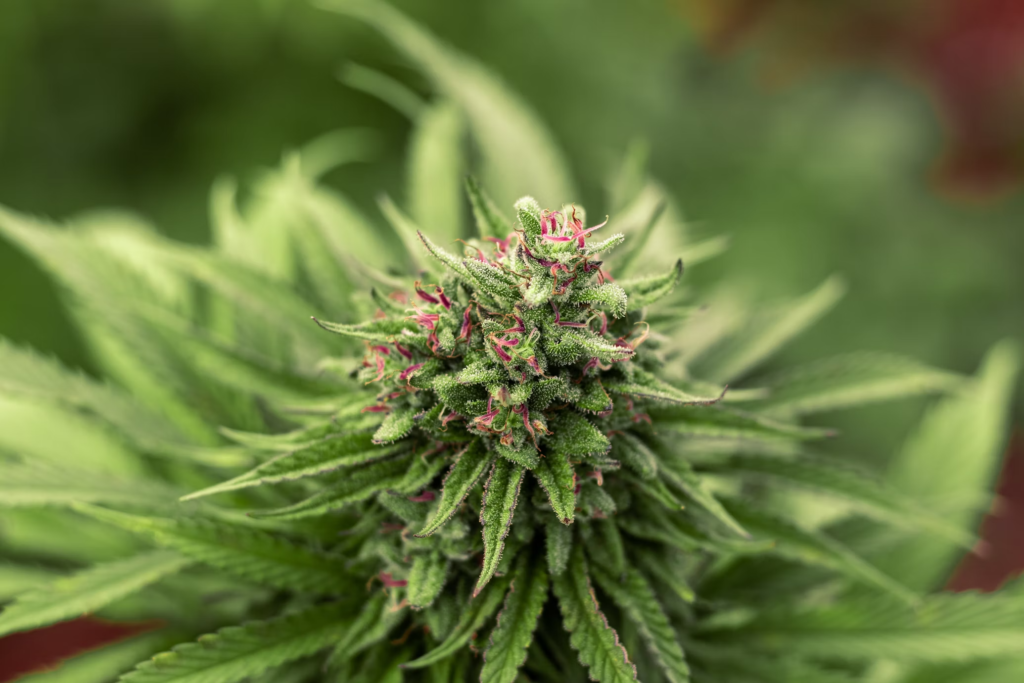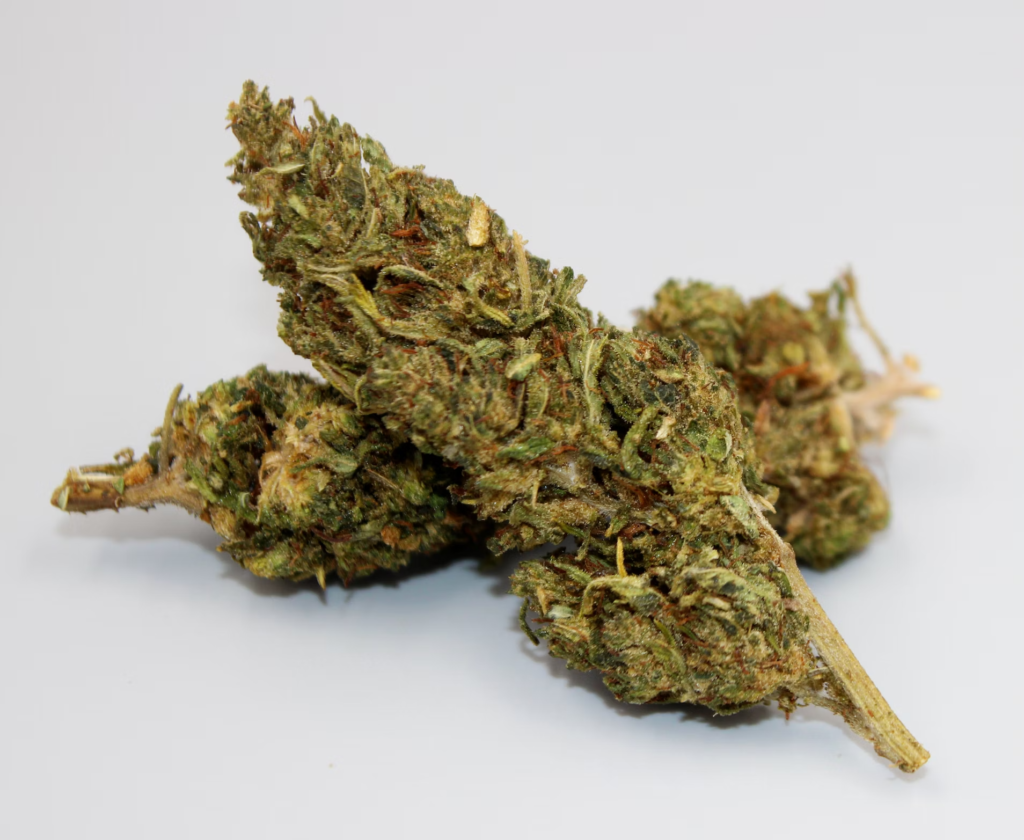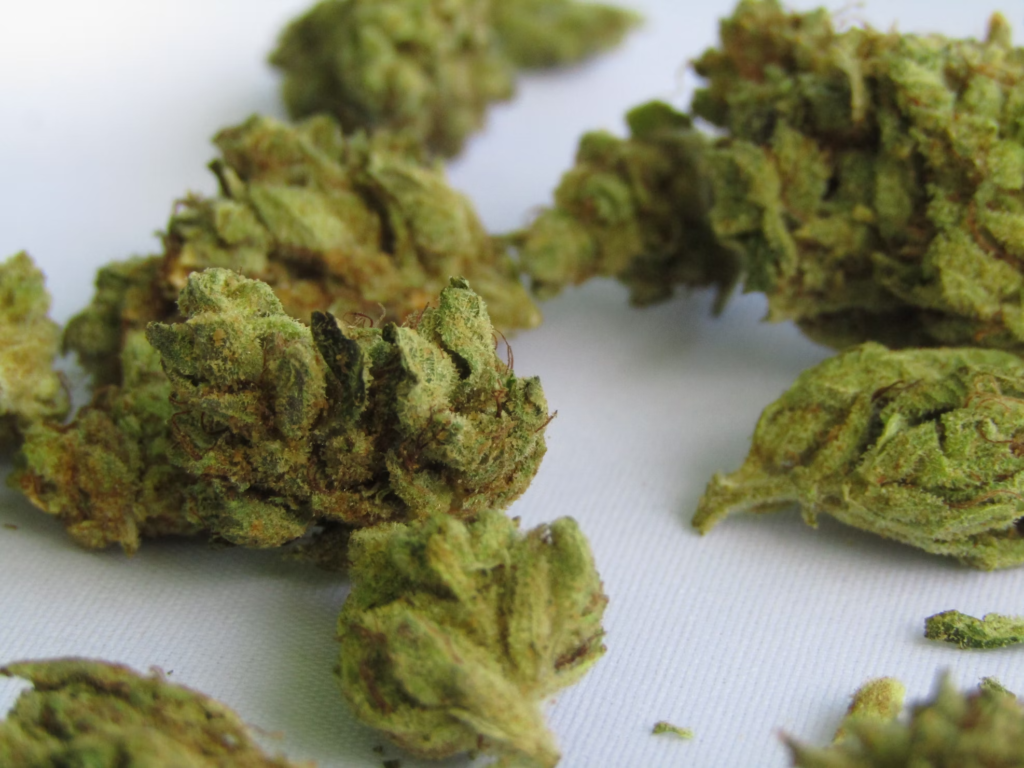Understanding Autoflower Seeds: A Comprehensive Overview

Contents:
- Non-photoperiod strains: what does it mean?
- Particularities of autoflowers
- How are autoflowering plants created?
- Who uses automatic cannabis strains, and why?
- The influence of terpenes in autoflowering strains
- How to grow autoflowering seeds
- Popular autoflowering cannabis strains
- Top tips for making the most of your autoflowering cannabis
- Choose the best autoflowering cannabis seeds for your climate
- The best autoflowering cannabis strains by category
Autoflowering cannabis seeds give rise to plants that naturally enter the flowering stage within 2-4 weeks of growth, eliminating the need for growers to manually adjust the light schedule. In contrast to cultivating feminized photoperiod cannabis, where the flowering phase requires careful light manipulation, autoflowers simplify the process.
One significant advantage of autoflowers is their shorter growth time. Certain varieties can be harvested as early as 8 weeks after germination. Moreover, their compact size makes them exceptionally suitable for indoor cultivation. As a result, autoflowers are highly favored not only by novice cannabis growers but also by experienced ones who appreciate the distinctive characteristics of autoflowering cannabis.
Non-Photoperiod Strains: What Does It Mean?
Unlike feminized (photoperiod) cannabis plants, which rely on the duration of light they receive to initiate flowering, autoflowering strains bloom based on their age, regardless of the light hours. This unique trait makes autoflowers non-photoperiod strains. Autoflowers possess several remarkable characteristics:
- Plants flower automatically after 2–4 weeks.
- The average period between planting and harvest is 10 weeks.
- Autoflowering seeds are also feminized. No need to worry about male plants.
- Plants stay small (30–100cm).
- They don’t attract too much attention. Ideal for stealthy grows.
- You can harvest several crops per season.
Particularities of Autoflowers
The initial introduction of autoflowers to the market in the early 2000s left much to be desired. They lacked potency, had underwhelming aromas, and yielded subpar results.
However, significant advancements have been made in the development of autoflowers since then. Modern autoflowering strains now compete with, and in some cases surpass, feminized photoperiod strains in terms of potency, yield, and aroma. Despite these improvements, autoflowers still retain the advantageous characteristics mentioned earlier, while also gaining a reputation for their stability and resilience.
In the present day, autoflowers have evolved to meet the demands of even the most discerning users. Recreational users can easily find autoflowering varieties rich in THC, while holistic users have the option to obtain autoflowers low in THC but high in CBD, allowing them to benefit from the non-psychoactive cannabinoid.
How Are Autoflowering Plants Created?
Autoflowering strains are the result of a crossbreeding process between indica or sativa plants and ruderalis. Ruderalis is a wild variety of cannabis found in regions with short summers but extended daylight hours, such as Northern Europe or Siberia. Unlike other cannabis types, ruderalis does not depend on daylight duration to trigger flowering; instead, it flowers based on its age.
Ruderalis, when grown independently, doesn’t offer significant benefits. Its buds lack potency, and the plants tend to be small with low yields. However, breeders made a breakthrough by hybridizing high-quality indica and sativa strains with ruderalis, resulting in the development of autoflowering varieties. This innovative approach has revolutionized cannabis cultivation by combining the desirable traits from each cannabis subspecies, resulting in improved quality and versatility.
Who Uses Automatic Cannabis Strains, and Why?
- Growers: Autoflowers have gained popularity among growers due to their convenience and simplicity, delivering swift harvests with satisfactory yields. Their compact stature makes them ideal for cultivating in limited spaces, making them an excellent choice for micro-grows or even placing a couple of plants on a balcony. Their resilience and robust nature also make them well-suited for outdoor cultivation. Additionally, their small size renders them suitable for discreet guerrilla grows.
- Smokers: Autoflowers offer recreational users a comparable experience to feminized photoperiod cannabis. Whether you seek a relaxing, uplifting, fun, or giggly high, there is an autoflowering strain out there to suit your preferences. In fact, certain autoflowers have slightly lower THC levels compared to the average strain, catering to individuals who prefer a milder and more balanced effect when consuming cannabis.

The Influence of Terpenes in Autoflowering Strains
Terpenes, the aromatic compounds found in cannabis, play a crucial role. Each strain possesses a unique terpene profile, contributing to its distinct aroma and flavor. When you indulge in autoflower buds and detect citrusy, flowery, fruity, skunky, or fuel-like notes, it’s a result of the specific terpene composition of the strain. Moreover, terpenes are believed to have more than just sensory appeal; they may also influence the effects produced by a strain.
How to Grow Autoflowering Seeds

1. Use light, well-draining soil
When cultivating autoflowers, it is recommended to use soil that is lighter in texture compared to what is typically used for growing feminized photoperiod cannabis plants. If necessary, you can enhance the soil by incorporating perlite, which helps improve its airiness and drainage properties.
2. Indoors vs outdoors
Indoors: Unlike photoperiod cannabis, there is no requirement to alter the light schedule for autoflowers. You can maintain a consistent 18/6 (18 hours of light, 6 hours of darkness) or even a 24/0 light schedule from the moment of germination until harvest for your autoflowering plants.
Outdoors: With autoflowering plants, you have more flexibility compared to photoperiod plants when it comes to seasonal constraints. You can cultivate autoflowers throughout the year, as long as you avoid frosty conditions. These plants can be harvested within 8-10 weeks after planting, allowing for multiple harvests per year if you stagger their planting dates. Autoflowers possess a discreet and compact nature, making them an ideal choice for discreet outdoor operations.
3. How much time do you need to grow autoflowers?
The timeframe for maturity varies depending on the specific strain, but as a general rule, autoflowers have a significantly shorter growth period compared to feminized photoperiod cannabis. On average, autoflowers complete their life cycle within approximately 10 weeks, with certain strains being ready for harvest as early as 8 weeks after germination.
4. Can you grow feminized photoperiod and autoflowering cannabis in the same grow room?
While it is possible to grow autoflowers alongside photoperiod plants, it is not the most optimal approach. One concern arises from the disparity in size between the two types of plants. Additionally, flowering photoperiod plants requires transitioning to a 12/12 light schedule, which would provide fewer hours of light than the recommended 18 or 20 hours for autoflowers. Consequently, this light discrepancy could lead to reduced yields in autoflowers.

5. Optimal temperature and humidity for growing autoflowers
To ensure healthy growth, it is recommended to maintain a moderate temperature of around 21°C (room temperature) in your grow room. Extreme cold or excessive heat can potentially cause issues during the growth process. For optimal results, create an environment where you have full control over the temperature and utilize heating or cooling mechanisms if needed.
The ideal humidity levels for your autoflowers vary depending on their stage of growth. During the initial weeks, they thrive in a slightly more humid environment. However, as your plants transition into the flowering stage, it is advisable to reduce the relative humidity to a range of 40-50%. This adjustment helps minimize the risk of mold development and ensures a favorable growing environment.
6. What kind of nutrients do autoflowers need?
Autoflowers typically have a smaller stature compared to feminized photoperiod cannabis plants. The smaller size of autoflowers means they have lower nutrient requirements compared to larger plants.
When using commercial cannabis nutrients, it is advisable to provide only ½ or ¼ of the recommended dose to your autoflowers. If you are using pre-fertilized commercial potting mixes, you may not need to supplement with additional nutrients until your autoflowers enter the flowering stage, which typically occurs around week 3 or 4 of their growth cycle.
7. What kind of water for autoflowers?
Due to their smaller size and root system, autoflowers require less water compared to larger feminized photoperiod plants. It is crucial to avoid overwatering and allow the soil to dry out between watering sessions.
When cultivating autoflowers in soil, it is recommended to maintain an optimal pH level for your water/nutrient solution within the range of 6-7. To achieve the desired pH, natural pH “up” or “down” products can be utilized to adjust the pH level of your water accordingly.
8. What about plant training with autoflowering cannabis?
It is generally not advised to use plant training techniques like topping, FIM, super cropping, or defoliation on autoflowers. These methods can cause temporary setbacks or interruptions in growth, as they involve damaging the plants and require recovery time. Given the limited lifespan of autoflowers, these interruptions can significantly impact yields, resulting in diminished harvests.
However, you can explore gentle plant training methods such as LST (low-stress training) with autoflowers. LST involves carefully bending down stems and branches to create an even canopy, allowing for optimized light exposure. It is important to avoid any techniques that involve cutting or pinching to ensure the best results with autoflowers.

Popular Autoflowering Cannabis Strains
Presented below are several renowned autoflowering varieties that stem from popular cannabis strain families.
🚗 Lowryder (Quick One, Diesel, Solomatic CBD)
The pioneering autoflower, Lowryder, made its debut in the early 2000s, marking a significant milestone in the commercialization of autoflowering strains. Drawing from these legendary genetics, Royal Queen Seeds developed notable varieties such as Quick One, Diesel Automatic, and Solomatic CBD. The Solomatic CBD strain is specifically tailored for holistic users, boasting an impressive CBD content of 21% and containing less than 1% THC.
🍁 Kush (Bubble Kush Auto, Royal Kush Auto)
At Royal Queen Seeds, you’ll find a robust selection of autoflowers that pay homage to the renowned Kush lineage, often referred to as the “mother of all indicas.” Explore the delightful options such as Bubble Kush Auto, offering a fruity twist, and Royal Kush Auto, both of which are autoflowering versions of beloved classic strains.
🌫️ Haze (Amnesia Haze Auto, Royal Haze Auto, Royal Jack Auto)
Renowned for its invigorating cerebral effects, the esteemed Haze strain family is highly regarded for daytime consumption. Royal Queen Seeds offers autoflowering alternatives of these classic Hazes, such as Amnesia Haze and the autoflowering Jack Herer known as Royal Jack Auto. Notably, Royal Haze Auto is a remarkable fusion of Amnesia Haze, Skunk, and ruderalis genetics, delivering a unique autoflowering experience.
🔮 Afghan (AK Auto, NL Auto, Critical Auto)
Afghan, a timeless cannabis variety cherished by both smokers and growers, has been savored in the Middle East for centuries. Indulge in the soothing effects and delightful spicy undertones found in RQS’ AK Auto, Northern Lights Auto, and Critical Auto, all of which offer generous yields alongside their exceptional qualities.
🍪 Cookies (Gorilla Auto, Cookies Auto)
The highly acclaimed Cookies strain family, originating from the West Coast of the US, has gained immense popularity. Renowned not only for their delectable dessert-like flavors but also for their invigorating and sociable effects, the Cookies strains have captivated enthusiasts. Royal Queen Seeds proudly presents exceptional autoflowering varieties with Cookies genetics, including the powerful Gorilla Auto, crafted from the renowned Gorilla Glue strain, and the enticing Cookies Auto.
🍇 Blueberry (Haze Berry Auto, Bluematic)
The renowned “Blue” family of cannabis, celebrated for its delightful sweet berry aromas, has gained immense recognition. Originating from the US West Coast, the iconic Blueberry strain has been masterfully incorporated into two beloved offerings from RQS. Haze Berry Auto is a harmonious fusion of Haze Berry and Blueberry Auto, while Bluematic represents the automatic version of the classic Blueberry strain.
💜 Purple (Purple Queen Auto, Purplematic)
Derived from carefully chosen Kush varieties originating from Afghanistan and Pakistan, the Purple family of cannabis exhibits not only a captivating allure but also a stunning visual appeal. Embracing the essence of this lineage, Royal Queen Seeds presents Purple Queen Auto as an automatic rendition of the esteemed Purple Queen strain. Additionally, Purplematic CBD boasts a remarkable CBD content of 17% while containing minimal levels of THC, ensuring a pristine and unclouded experience.
🍌 Banana (Fat Banana Auto)
Combining the renowned Cookies genetics with the delectably fruity Fat Banana Kush results in a truly extraordinary cannabis experience. The outcome is an exceptionally fruity delight that tantalizes the taste buds. With an impressive THC content of 22%, this strain offers a potent punch, delivering a double-whammy of satisfaction for cannabis connoisseurs.
🍦 Gelato (Green Gelato Auto)
Enthusiasts of exceptional Californian cannabis won’t be able to resist the allure of Green Gelato Auto by RQS. This exquisite creation emerged from the harmonious union of Green Gelato and an autoflowering Girl Scout Cookies strain. The outcome is nothing short of extraordinary, boasting an incredible aroma and mind-blowing potency, with a staggering THC content of 24%.
🦨 Skunk (Royal Dwarf, Sweet Skunk Automatic)
No compilation of exceptional cannabis varieties could overlook the iconic Skunk family. Royal Dwarf expertly combines ruderalis with Skunk genetics, while Sweet Skunk Automatic infuses the autoflowering enchantment into the classic strains Early Skunk and Critical. Prepare to indulge in an abundance of spicy and skunky flavors that epitomize the essence of this legendary lineage.
🧀 Cheese (Royal Cheese Auto, Blue Cheese Auto, Fast Eddy)
Catering to the aficionados of the renowned UK strain Cheese, Royal Queen Seeds has an offering that will surely delight. Enter Royal Cheese Auto, boasting a distinctive spicy flavor profile and delivering a profound stone effect. Additionally, Fast Eddy Automatic CBD is crafted with these legendary UK genetics, offering a low THC content of 9% and a rich CBD profile. This exceptional strain provides a clear and soothing high, ensuring a serene and mellow experience.






